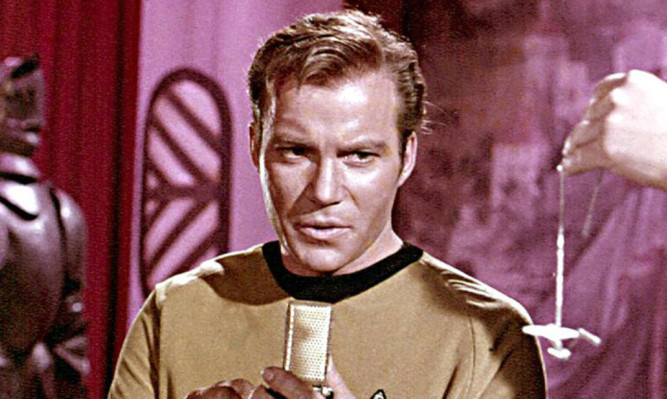A St Andrews University press release has boldly gone where no other university press release has gone before and caught the eye of Captain James T Kirk himself.
Two weeks ago St Andrews University scientists revealed they had invented a real-life tractor beam, as featured in the classic sci-fi series Star Trek.
The discovery will for the first time allow a beam of light to attract things or even “Klingon” to them.
The research breakthrough was reported by news organisations around the world including Forbes, Fox News, Time Magazine, the Huffington Post and hundreds of others including The Courier.
However, we can reveal that after the news went viral on social media, it was forwarded on Twitter by none other than Star Trek actor William Shatner (pictured), who played Captain Kirk in the original 1966 TV series and the motion pictures that followed.
St Andrews University media office staff kept an eye on Twitter and were surprised to see the following pop up: “William Shatner @WilliamShatner. Difference between Sci-Fi and Sci-Fantasy: Star Trek Tractor Beam: reality,Star Wars Death Star: not ;-)”
A St Andrews University spokesman told The Courier: “This is definitely a first for St Andrews, to have boldly gone where no other university press release has gone before and caught the eye of James T Kirk himself. It’s Fife Jim, but not as we know it.”
The USS Enterprise in the TV series and films used a tractor beam to snare other spaceships and large objects hurtling through space.
However, although the breakthrough by academics at St Andrews and the Institute of Scientific Instruments (ISI) in the Czech Republic is not quite as ambitious, it could lead to more efficient methods of medical testing, such as the examination of blood samples.
It is the first time a light beam has been used to draw objects towards the light source, albeit at a microscopic level.
The team, led by Dr Tomas Cizmar, research fellow in the School of Medicine at St Andrews University, with Dr Oto Brzobohaty and Professor Pavel Zemanek, both of ISI, discovered a technique which will allow them to provide “negative” force acting upon minuscule particles.
Normally, when matter and light interact, the solid object is pushed by the light and carried away in the stream of photons.
The scientists at St Andrews and ISI have now demonstrated the first experimental realisation of this concept, together with a number of exciting applications.
Interestingly, the scientists identified certain conditions in which objects held by the “tractor” beam force-field rearranged themselves to form a structure which made the beam even stronger.
